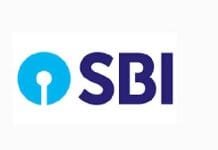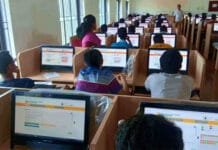The shift in the last decade towards digitally integrated classrooms has revolutionised the way teachers interact and motivate their students. To keep students involved and eager to learn, schools and teachers need a more innovative approach to how they structure the classroom. Thankfully, many teachers are rising to the challenge by utilising digital tools in new and interesting ways that both aid the learning of their students while keeping them engaged and motivated.
Using modern tools and techniques, teachers are facilitating better connection and support systems and getting students invested in their learning, without sacrificing their well-being. Below, we’ll explore some of the most common ways teachers are creating healthy, digital classrooms.
Personalised Experiences
Some digital tools allow teachers to personalise students’ experiences. Personalising the student experience can include many techniques, but things like allowing them to set up their learning platforms in a style they wish, personalised messages on their digital tools and setting up computer stations for each student are some examples. Teachers can also personalise physical documents through digital tools that help students feel acknowledged, like certificate templates on Adobe Express or by making interactive feedback reports. Personalising students’ experience helps teachers reconnect with students in a digital classroom by showing students that they are acknowledged.
Interactive Learning Tools
One of the most popular ways that teachers engage their students in the digital classroom is by using interactive learning tools. Platforms like Kahoot allow you to make custom quizzes and games that have become popular among students of all age groups. This aids in learning because teachers can tailor specific questions to the level and context of the class. For example, if the teacher explained a concept using a person’s name, they can use this person’s name again in the quiz to help students connect the learning and apply it themselves.
Some schools are also using digital tools with gamification elements in various subjects to get students to interact with the information. Gamification involves ways to turn learning into a game. For example, this might include using levels or stages that you’ll often find in video games, but for math quizzes. Using interactive tools, teachers have modernised the classroom environment so that it creates memorable and motivating experiences for students.
Creating a Community
Students thrive when they feel like they are a part of something bigger than themselves. Schools have used teams and groups for a long time to foster a sense of belonging that helps students achieve their academic goals. In addition to this, it provides them with a support system that goes beyond the classroom.
In the modern digital classroom, it is easier than ever to connect, and teachers are using this to keep students motivated in the classroom. Unpoliced digital spaces can breed damaging communication, but there are many great chat and social class-oriented software that allow students to connect with each other digitally, while having their conversations monitored and restricted.
Flexible Learning
Each student learns at their own pace, and in rigid systems, some students can get left behind or held back due to no fault of their own. In a traditional classroom, students who fall behind on the curriculum can become disillusioned and unmotivated in the classroom.
Teachers in a digital classroom take a different approach, as they’re able to provide flexible learning options for students so that they can learn at their own pace. Digital learning modules are a great example of this as they provide students with only the information they need when they need it. This prevents students who are falling behind from being overwhelmed, whilst also allowing more advanced students to progress ahead.
Choice and Control
Students in the digital classroom have more control over their learning than ever before. While teachers still set the pace and subject matter, students are often given platforms where they can take modules at their own paces and refer to learning resources in the platform as they do this. Teachers who use this method can access the progress of students and check in with those who are taking longer than average on particular modules.
In other cases, teachers might present a few topics for the day, and provide students with the choice to choose which they work on through their digital modules. Having control over their learning helps students stay engaged, motivated and driven to make achievements, and they sustain a stronger interest as they become more invested in the process of their own learning.
Promoting Wellbeing
The digital age has brought an increase in mental health concerns that have had a particular prevalence among young people. The higher rates of depression and anxiety in younger people are thought to be caused by the increase in social media and screen time. As a result, classrooms and digital screens within schools have been put under the microscope to prevent bad habits with digital tools, phones and screens.
Teachers in digital classrooms are trained on setting and helping students set boundaries around digital tools, as well as practising more mindful ways of connecting with technology, to help them build good habits early on. Boundaries might include only working on computers and screens between particular hours of the day, not having tablets or phones on students while the teacher’s speaking and taking regular breaks from the screen. Promoting wellbeing activities in the classroom also keeps students energised and motivated to learn while nurturing their mental health.
Better Experiences & Boundaries in the Digital Classroom
In a digital classroom, keeping students motivated while nourishing their wellbeing is a balancing act that’s incredibly important to their learning outcomes and future habits. Utilising modern digital classroom tools, teachers can motivate students to stay engaged in and in charge of their education.
Using these tools, teachers create personalised experiences for students that help them feel connected to the teacher while enabling better learning experiences. Online tools such as Kahoot allow students to interact and engage in new and creative ways, while other digital platforms promote connection and socialisation between classrooms to build strong communities.
Digital classrooms are also a lot more flexible than traditional classrooms, allowing students to modulate the speed of their learning as it suits them and stay more invested and interested in their own learning outcomes. While there are many fantastic benefits of digtial classrooms that help keep students stay motivated, teachers also must be proactive with encouraging boundaries around technology to build healthy early relationships between students and their technology.




















